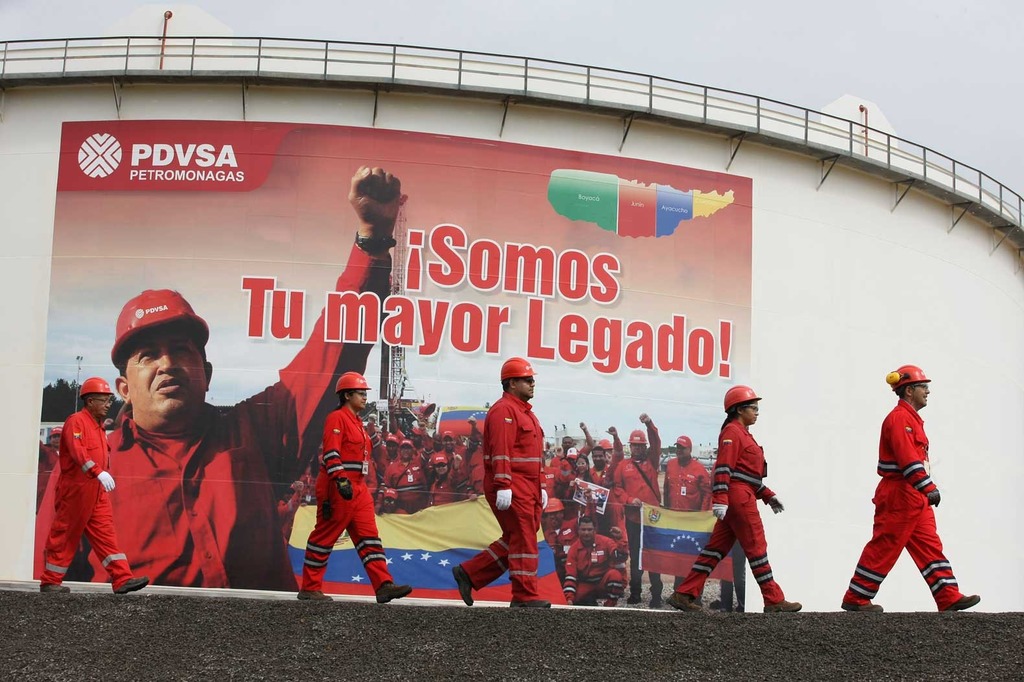RUSSIA MONITOR
Date: 17 June 2018
Rosneft’s Problem with Venezuela
Venezuela, ruled successively by Hugo Chavez and Nicolas Maduro, has become Russia’s main ally in the Western Hemisphere. The alliance appears to be quite costly as Russia actually subsidies Venezuela’s socialist-managed economy. Russia’s state oil giant Rosneft plays the main role in the alliance while its CEO Igor Sechin has become the principal liaison between Moscow and Caracas. However, the country’s dramatically worsening economic situation increases the risk of Russian investments and loans in the local oil sector. The assets of Venezuela’s state-run PDVSA concern were in the pinnacle of Western creditors, and Rosneft is no longer interested in paying money to support a bankrupt. Such complete collapse of Venezuelan economy along with the political change in Caracas may even end up with losing billions of dollars invested by the Russians.

According to the International Monetary Fund, the country’s GDP may shrink by up to 15 percent this year. Both an economic catastrophe and a political crisis deter foreign investors, even such Venezuela’s long-time allies as Russia and China. Companies from both countries have not decided to accept the offer to purchase the refinery in Paraguana. According to earlier plans, Russia’s Rosneft would handle the Amuay refinery (with overall capacity of 650,000 barrels per day) while China’s Petrochina would take over the Cardon refinery (310,000 barrels). Corporations from Russia and China withdrew from the agreement due to the “terrifying conditions” in which both facilities are located. Both Rosneft and Petrochina have claimed that improving their current situation would involve very large investments that would eventually exceed the budget.
Due to the lack of oil and personnel, Venezuela may even be forced to close the country’s three largest refineries. Plunged into deep crisis, the republic is not able to fully use its one of the world’s largest oil resources, which means a blow to the main source of the state’s income. Venezuela plans to close refineries in Cardon, El Palito and Puerto La Cruz. The first of them constitutes an illustration of bad socialist management model; back in the 1990s, Cardon was part of the largest oil complex in the world and the most technologically advanced refinery. So what are the reasons behind current problems and lack of personnel and raw material? The problems started in 2002-2003 when President Chavez fired 20,000 experienced PDVSA workers. Why do domestic refineries have to struggle with the lack of raw material? According to OPEC, Venezuela produces 1.6 million barrels per day, but the priority is the payment of debts with oil shipments to China, Russia and Cuba.
PDVSA is Rosneft’s largest debtor; the company received from Igor Sechin a 5.5 billion dollar loan under the pledge of the Citgo subsidiary that, however, may be seized by a Canadian mining company controlled by Russian investors Vladimir and Andrei Agapov. The problem is that PDVSA is heavily indebted in other companies. A court on the Dutch island of Curacao has authorised the local subsidiary of US oil giant ConocoPhillips to seize 636 million dollars worth of assets held on the island by the Venezuelan firm. The court allowed Americans to confiscate oil or petroleum products as well as PDVSA bank deposits. Conoco has also started the process of freezing PDVSA’s assets on the islands of Bonaire, Aruba and St. Estatius; all of them play an important role in the export process of Venezuelan oil. Such situation will result with PDVSA’s even more serious problems.
All texts published by the Warsaw Institute Foundation may be disseminated on the condition that their origin is credited. Images may not be used without permission.














